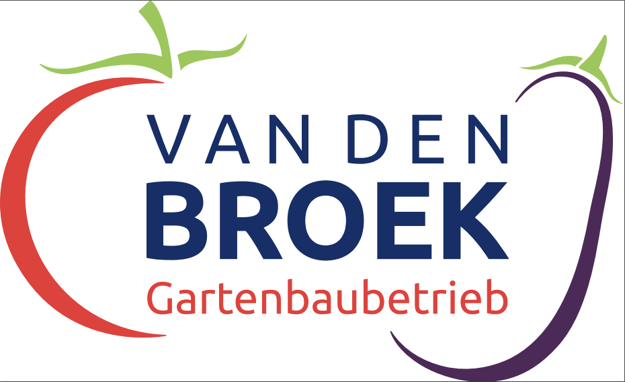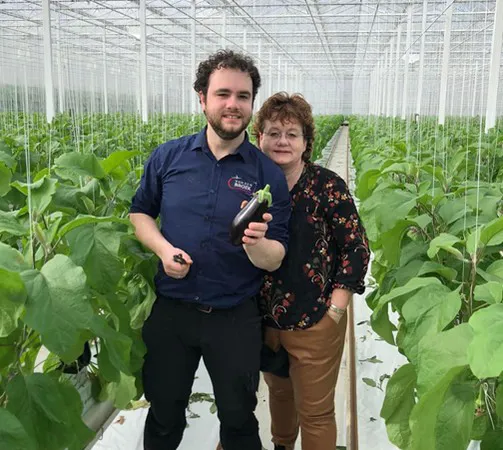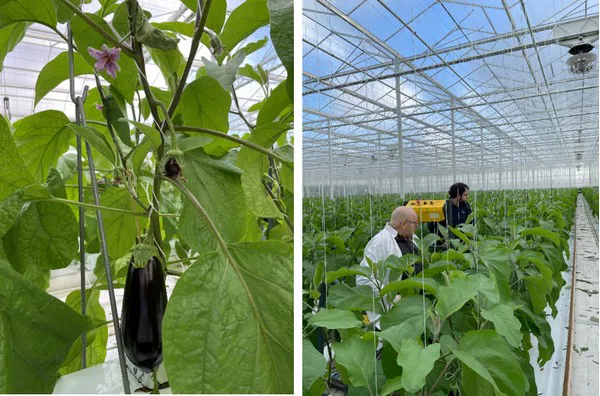 Gartenbau Van den Broek (Paul, Marcel & Jolanda van den Broek) are already growing tomatoes in Germany for over 10 years now. Since 2021 they started with aubergine (eggplant) cultivation on 1.25 ha. Of course with many years of experience in tomatoes they have a strong foundation to realize high production in aubergines. However they requested support with the basics in aubergine growing. And as Cultivators we are partners in growing business and experienced in aubergine.
Gartenbau Van den Broek (Paul, Marcel & Jolanda van den Broek) are already growing tomatoes in Germany for over 10 years now. Since 2021 they started with aubergine (eggplant) cultivation on 1.25 ha. Of course with many years of experience in tomatoes they have a strong foundation to realize high production in aubergines. However they requested support with the basics in aubergine growing. And as Cultivators we are partners in growing business and experienced in aubergine.
Van den Broek heard from an eggplant grower in the neighborhood positive information about the support of Tom Moerenhout of Cultivators. In a first discussion between Tom and Paul it became clear that the devil is in the details if it comes to successful aubergine cultivation. Half a degree Celsius more or less can make a big difference on crucial times in the cultivation period. Therefore it was clear for Paul to cooperate closely with Tom who has over 20 years of experience in aubergine cultivation. Together they managed to realize an exceptional first year of cultivation.

The greenhouse is constructed a few years ago with diffuse glass (20% haze) and double AR coating. This is unique for aubergine cultivation in western Europe. A double screen installation and Hinova Ventilation Jets are installed in the aubergine compartment. Both are welcoming tools for the eggplant cultivation as it is a crop that feels comfortable in tropic conditions. For example, in tomato they have only one screen installed, but tomato requires a lower pre night temperature. In aubergine you need more energy to keep a pre-night temperature of 17-18 degrees Celsius. During the night you will increase the temperature to be able to realize 20-21 degrees in the morning. The 24 hour temperatures are higher as well as working with a higher RH is different to their tomato crops.
Climate and harvesting
Climate is not the only difference between tomato and aubergine. One of the key challenges is harvesting the fruits. It is Tom's experience that most people need almost a year to this in a correct manner at sufficient speed. You need to ‘read’ the fruits on aspects as type of fruit, age and quality to identify the right harvesting moment. Tomatoes are much easier as you basically pick when they turn red. Also harvesting eggplants at height on trolleys is different to tomato as you lower the crop so you can harvest on the ground.

Another aspect is the density of the crop itself with big leaves and many side branches which carry fruits. This last aspect brings us to one of our key learning and goals for coming season. Learning how to optimally top/pinch side branches as last year we noticed that keeping 3 or 4 flowers is too much. To maintain sufficient growing speed in plant and fruit we need to manage the pinching more closely. A max of 2 per side branch to improve crop balance and easier harvesting. Overall Paul was surprised by the number of fruits you can get from just one aubergine plant over one crop season. The harvesting scheme and strategy is also different to other vegetable crops. The demand in Germany is for smaller fruits and therefore a need to harvest 3 times per week all year round.
Challenges with pests
Van den Broek is growing Tracey of Rijk Zwaan as main variety with Maxifort (de Ruiter) as rootstock. The pinched plants are propagated by Holland Plant in the Netherlands and planted on 10 cm high GT Master NG2.0 slabs of Grodan on xx December 2021. A system with 4 stems per plant and a density of approximately 5 st/m2. In aubergine it is important to maintain uniformity in the top of the plant by topping heads. For new eggplant growers and the labor force it is something they need to learn. Tom trained the team and explained that crop registration plays a major role in keeping balance in the crop in line with the predicted light levels coming up.
Not expected by Paul were the challenges with pest & diseases compared to tomatoes. Aubergine is more vulnerable to pests like thrips, spider mite & aphids and new for them bugs and beetles. Another point of attention according to Paul was the time required to change the crop since the amount of plant residue is much higher requiring more labor. On top of this for the staff it was not the best period to work in the greenhouse in such dusty circumstances.
Paul concludes we still have a lot to learn in growing aubergines. Using the extra light due to scattering deeping into the canopy is crucial. And of course, the first season you ‘play safe’ as we were worried the crop could not handle the summer therefore we were steering sometimes too vegetative. The start of current season was already better compared to last year as we managed to develop a strong balanced crop so far. Together with Tom as consultant we will work on further improvements in generative steering and gain more experience in what we achieve with diffuse glass in this crop.
Both Paul and Tom were positively surprised with the performance of the crop under diffuse glass last season. With the much better start this season both hope to reach already this year the goal of 65 kg/m2. With more focus on pieces (over kilos) this would be definitely a serious achievement. Of course, a more dry summer with good light levels would help to reach this goal. Anyway, ending up the first aubergine growing season with about 62-63 kg/m2 is a performance van den Broek and Tom are proud off.
For more information:
Cultivators
Sonny Moerenhout
+31612146995
sonny.moerenhout@cultivators.nl
www.cultivators.nl
